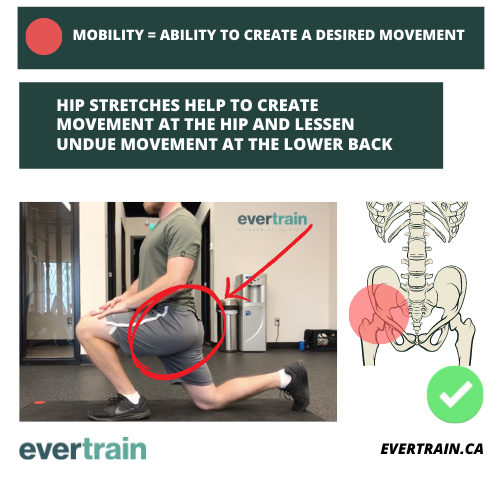~5 minute read
Do you find yourself with constant aches in your joints and are unsure why? 😔 👎
Often the pain we experience can be pin-pointed to a specific area.
By understanding how neighbouring joints and surrounding muscles function, pain can be significantly reduced with relative ease.
The Joint by joint approach
The “Joint by joint approach” theory developed by Mike Boyle and Gray Cook, explains how joint pain is often caused by improper function at an adjacent joint. If a joint isn’t performing the way it should be, it adds stress to a neighbouring joint because of the muscles/tissues that attach them together. 🦴
Of the primary joints in the body, each can be described as either:
A mobility joint (primary function is to create movement)
A stability joint (primary function is meant to stabilize the surrounding muscles to assist in movement).
Here, we identify which joints are meant for mobility, which are meant for stability and explain how poor function in surrounding joints can lead to pain.
Mobility - Functions and Implications
Ankle - Poor ankle mobility will result in increased pressure on the knee. Causing it to become unstable. This leads to pain.
Hip - The hip joint's primary function is mobility although stability is important too. A weak hip can cause internal rotation of the femur leading to excess strain on the knee and can cause pain. Poor mobility in the hips causes lower back pain.
Thoracic spine (upper back) - Allows the upper torso to rotate separate from the hips. Excess tightness in the upper back causes the lower back to move more than it should. This leads to both lower back pain and shoulder pain.
Shoulder - Designed to be very mobile. Shoulder pain is often due to poor scapular stability. It can also come from tight areas like bicep, triceps, lats, pecs, etc.
Wrist - Stabilized by the forearm muscles that connect it to the elbow. Tightness here reduces the range of motion needed for everyday activities. This can lead to pain.
Stability - Functions and Implications
Knee - Stability at the knee comes from strong hips. Excess restriction at the hip or ankle cause the knee to become unstable. This can lead to pain.
Lumbar spine (low back) - Intended to stabilize the body while the hips or upper back are creating movement. Tight hips cause the lower back to generate movement. This is a compensation for the decreased range of motion resulting in pain if not corrected.
Scapula (shoulder blade) - A strong anchor point to allow the shoulder to move in all directions. Many muscles of the back, shoulder, neck and arms attach to the scapula. When these muscles become weak, they become unstable. This can cause pain in the shoulders and neck.
Elbow - Acts as an anchor point for the muscles of the upper and lower arm. Repetitive use of the wrist (i.e. using a mouse all day) can cause excess muscle tension in the forearm. This can lead to pain in the elbow.
The Good News!
Although joint pain is not always caused by muscular imbalance, stretching and releasing the muscles that are tight, and strengthening the weaker ones around the injury will help reduce pain and inflammation of the surrounding tissue.
By introducing the right exercises into your daily routine, you can begin to correct movements and alleviate joint pain. 🤗
Common mistakes occur when people add strength to a dysfunctional joint. Ensure mobility and stability exercises are successful before adding weight.
If you need help understanding where your pain is coming from and how to reduce it, we can help you! 🙂
We’re now taking on more online personal training clients to help you live a pain free life!
To learn more about how we can help you alleviate joint pain schedule a FREE consultation with an Evertrain Success Coach by clicking on the button below. 👇
Thanks for reading! 😀
Brandon - Online Personal Training Expert, Triathlete, Neuroscience and Mental Health graduate






